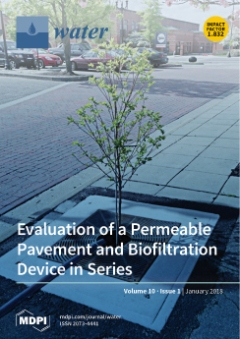The sustainability of the Hetao Irrigation System, located in the water scarce upper Yellow River basin, is a priority considering the need for water saving, increased water productivity, and higher farmers’ incomes. The upgrading of basin irrigation, the main irrigation method, is essential
[...] Read more.
The sustainability of the Hetao Irrigation System, located in the water scarce upper Yellow River basin, is a priority considering the need for water saving, increased water productivity, and higher farmers’ incomes. The upgrading of basin irrigation, the main irrigation method, is essential and includes the adoption of precise land levelling, cut-off management, improved water distribution uniformity, and adequate irrigation scheduling. With this objective, the current study focuses on upgrading wheat basin irrigation through improved design using a decision support system (DSS) model, which considers land parcels characteristics, crop irrigation scheduling, soil infiltration, hydraulic simulation, and environmental and economic impacts. Its use includes outlining water saving scenarios and ranking alternative designs through multi-criteria analysis considering the priorities of stakeholders. The best alternatives concern flat level basins with a 100 and 200 m length and inflow rates between 2 and 4 L s
−1 m
−1. The total irrigation cost of designed projects, including the cost of the autumn irrigation, varies between 2400 and 3300 Yuan ha
−1; the major cost component is land levelling, corresponding to 33–46% of total irrigation costs. The economic land productivity is about 18,000 Yuan ha
−1. The DSS modelling defined guidelines to be applied by an extension service aimed at implementing better performing irrigation practices, and encouraged a good interaction between farmers and the Water Users Association, thus making easier the implementation of appropriate irrigation management programs.
Full article





